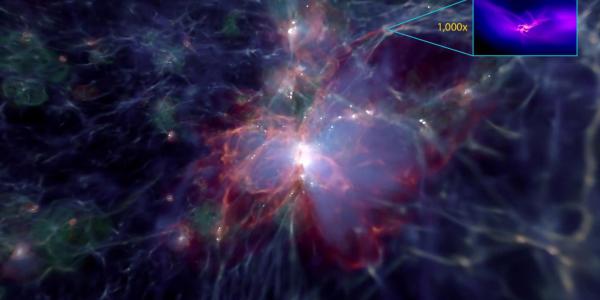Nuclear Physics Seminar with Abraham Flores on Variational Monte Carlo Calculations
A paramount goal in the field of nuclear physics is to unify ab-initio treatments of bound and unbound states. The position-space quantum Monte Carlo (QMC) methods have a long history of successful bound state calculations in light systems but so far have seen very little application to unbound systems. Here we introduce a numerical method to improve the efficiency and accuracy of unbound-state calculations in QMC, and as an initial application we compute scattering observables for the neutron-triton system using variational Monte Carlo (VMC) wave functions. The method consists of inferring long-range amplitudes in the wave function from integrals over the short-ranged region where all the particles interact. This approach using integral relations is well established in the literature; here we develop it for the QMC framework. We validate our code with a consistency check between short-range spectroscopic overlap functions computed from direct evaluation and from the integral relations; scattering amplitudes are long-range asymptotics of those overlaps. Comparison against published benchmark calculations using the same potential demonstrates that the integral method, when applied to the current VMC wave functions, produces more accurate scattering observables than direct evaluation from the same variational wave function. However, it still differs noticeably from exact results. We then present phase shifts and mixing parameters for the n + 3H system using additional interactions. In particular, we present one of the first applications of the Norfolk family of local coordinate-space chiral potentials in unbound systems of A > 2. The Norfolk results accurately describe s-wave scattering but predict p-wave cross sections that are too large. Compared with previous QMC scattering calculations, the integral method avoids difficulties associated with precise computation of energy differences and with convergence outside the interaction region, which are particularly severe in the variational calculation.

